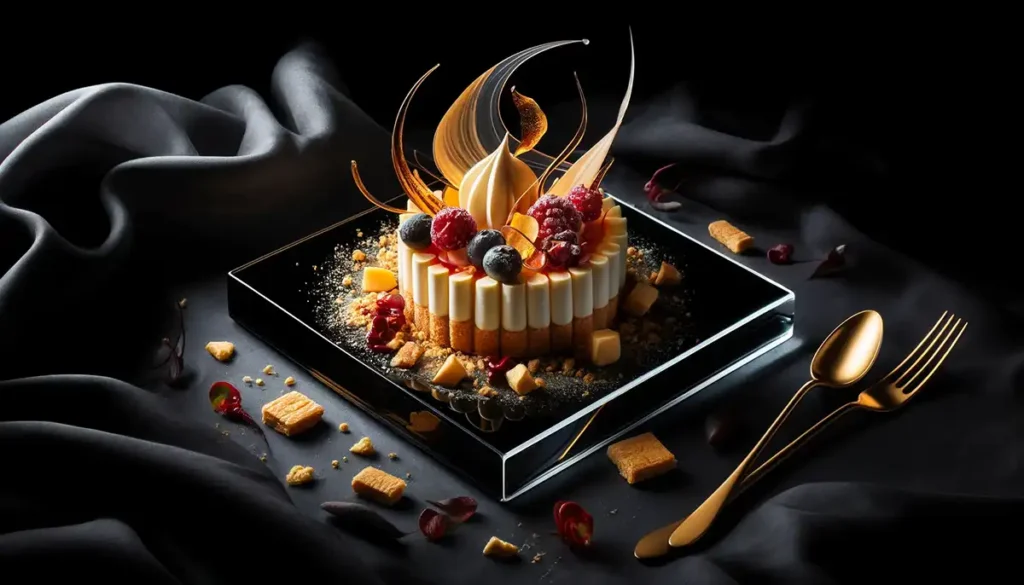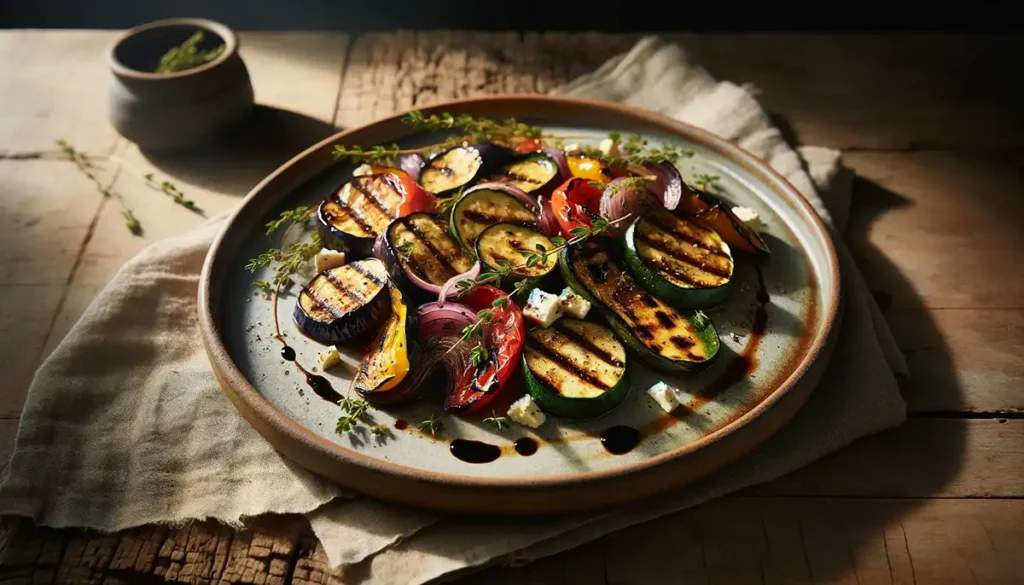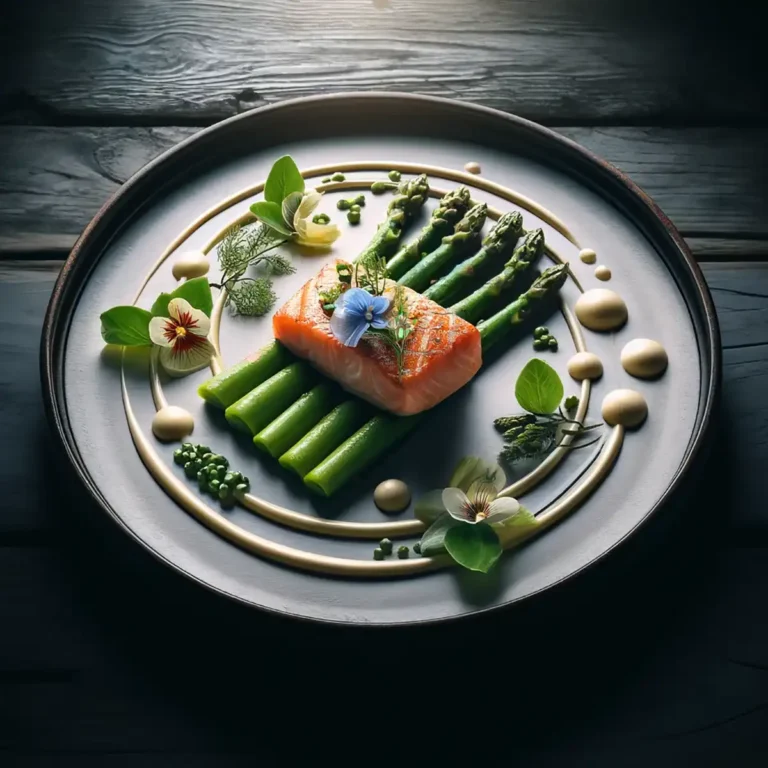Food presentation is an art form within the culinary world, where the arrangement and overall aesthetic of a well-plated dish play a crucial role. Chefs spend years perfecting their plate selection and food plating techniques, understanding that the visual appeal of a dish can be just as important as its taste. The top of the plate where food is placed, the stage upon which culinary masterpieces are unveiled, serves not only as a canvas for chefs but also enhances the dining experience by appealing to the diner’s eyes first.
You might find it intriguing that this flat plate surface, dedicated to food placement, isn’t just referred to as “the top of the plate.” It carries a specific name within professional kitchens and among culinary enthusiasts. This term encapsulates its importance in meal presentation and signifies the thoughtful consideration given to even the smallest details in gastronomy.
Understanding the Functionality of a Plate
When you think about plates, you might not consider how they work. We know from experiences at fine dining restaurants the variety of plates that accompany our dinner knife and fork. A bread plate and a salad plate, but did you know every part of a plate has a purpose, especially the top area of the main dinner plate where the food goes. In this section, we’ll explore why this part of a plate is so important.

The Role of the Top Area
Location and Characteristics
The top area of a plate is the wide, flat surface where you put your food. It’s the first thing you see when a plate is placed in front of you. The design is meant to be flat with slightly curved edges to prevent spills. Dinner plates can come in different sizes and shapes, like round or square, or even more creative decorative plates. But no matter what it looks like, the main function remains the same – it’s where your food takes center stage.
Why Is It Flat?
The flat surface of a plate isn’t just for looks; it serves practical purposes too:
- Stability: A flat surface makes sure that food stays in place without rolling or moving around, making it easier for you to eat.
- Heat Distribution: Plates are often heated before serving to keep the food warm. A flat surface allows for even distribution of heat, so every bite stays as delicious as intended.
- Sauce Control: Those curved edges? They’re important for keeping sauces and dressings on your food instead of dripping onto the table.
- Presentation: Plating food is like creating art, and the flat top of a plate is the canvas. It lets chefs arrange each element carefully for maximum visual impact.
So you see, the flat surface isn’t just there as a background; it plays a crucial role in how your food looks and tastes.
By understanding why plates are designed as they are, you can start to appreciate the effort that goes into presenting each meal. The culinary world takes this attention to detail seriously – so much so that there’s a specific term for the top area of a plate used by professionals in kitchens worldwide. In the next section, we’ll uncover this term and explore its origins and significance in the culinary arts.

Revealing Its Name: The Culinary Term for the Top of the Plate
The moment has arrived to uncover the well-guarded secret of culinary arts – the name of that top part of the plate where food is placed, a chef’s creativity turns into an edible masterpiece. This flat surface, the stage for food presentation, carries a designation that might surprise you.
The top part of a plate, where all the magic happens, is referred to as the “well” in culinary terminology.
Yes, it’s not a fancy term, but its role in dining experiences is monumental. The well is where every bite starts its journey to dazzle your taste buds and deliver the chef’s story right on your plate. It’s here that you’ll find meticulously arranged components, each complementing others while standing out in its unique way.
The Origin of the Term ‘Well’
The term ‘well’ might sound simple, but its origin is deeply rooted in culinary history. It originates from French cuisine, known for its finesse and emphasis on presentation. In French, it’s called “fond de plat,” literally translating into ‘base or bottom of the dish,’ but it refers to the flat top part of the plate where food is served.
The Significance of the Well in Food Presentation
The well is not just about aesthetics; it’s a demonstration of how different elements work synergistically to enhance culinary experiences. From color and texture contrasts to arrangement patterns and empty space utilization – everything counts when making use of this canvas.
Here are some key aspects highlighting the importance of the well:
- Color contrasts: ensure each ingredient stands out visually.
- Texture contrasts: create excitement in each bite.
- Arrangement patterns: guide how diners explore their meal.
- Empty space utilization: highlights focal points on the plate.
Every detail matters when presenting in the well, turning plate functionality into an art form itself.
The Mastery of the Well by Chefs
This term isn’t just thrown around casually; it holds great esteem in professional kitchens. Chefs spend years mastering techniques to make optimal use of this precious space. It’s not just about making food look pretty. It’s about crafting a visual narrative that complements the culinary journey, making each dish an experience to remember.
Using the term ‘well’ in your dining table discussions will not only elevate your culinary conversations but also provide you with a deeper understanding of the art of food presentation. It might seem like a small detail, but knowing this term is a testament to your appreciation for the culinary arts.
Now that you’re equipped with this knowledge, the next time you dine out or cook a meal at home, take a moment to appreciate the well. Recognize the thoughtfulness and creativity that goes into utilizing this flat surface to create a harmonious dining experience.

Conclusion
The world of culinary arts is vast and goes beyond just knowing the name of the top area of a plate. There are many interesting things to explore:
- Learning about flavor pairing can help you understand how different tastes work well together.
- Trying out different cooking methods can expand your skills and make your basic dishes even better.
If you’re eager to learn more about food and cooking, here are some suggestions:
- Books: Check out titles like The Flavor Bible by Karen Page and Andrew Dornenburg for great insights on flavor pairing.
- Documentaries: Watch shows like Chef’s Table on Netflix to get a behind-the-scenes look at famous chefs and their kitchens.
- Cooking classes: Consider taking online or in-person cooking classes where you can learn hands-on from experienced instructors.
Remember, everyone starts somewhere. Your journey into the culinary world may have begun with understanding the top area of a plate, but it doesn’t end there. Embrace this newfound knowledge and let it inspire you to explore further. Understanding the art of cooking can transform not just your meals, but also your overall dining experiences.
FAQs (Frequently Asked Questions)
What is the concept of food presentation in culinary arts?
Food presentation is the art of arranging, decorating, and serving food in a visually appealing manner. It plays a crucial role in culinary arts as it enhances the overall dining experience and can influence the perception of taste and quality of the dish.
What is the specific name for the top of the plate where food is placed?
The top of the plate where food is placed is known as the 'flat surface'. This area serves as the primary location for food placement and presentation and it referred to as the 'well'.
What is the specific name for the top of the plate where food is placed?
The top of the plate where food is placed is known as the 'flat surface'. This area serves as the primary location for food placement and presentation and it referred to as the 'well'.
Where is the top area located on a plate?
The top area of a plate refers to its flat surface, which is typically located in the center of the plate. This area is designated for primary food placement and presentation.
Why is the flat surface designated for primary food placement on a plate?
The flat surface of a plate is designated for primary food placement because it provides a stable and visually appealing platform for presenting dishes. It allows for creative arrangements and ensures that the food remains centered and well-balanced.



